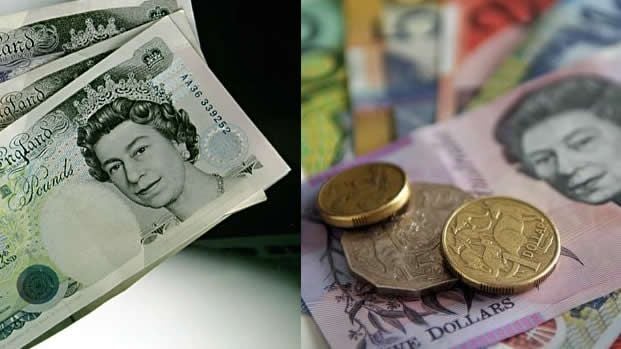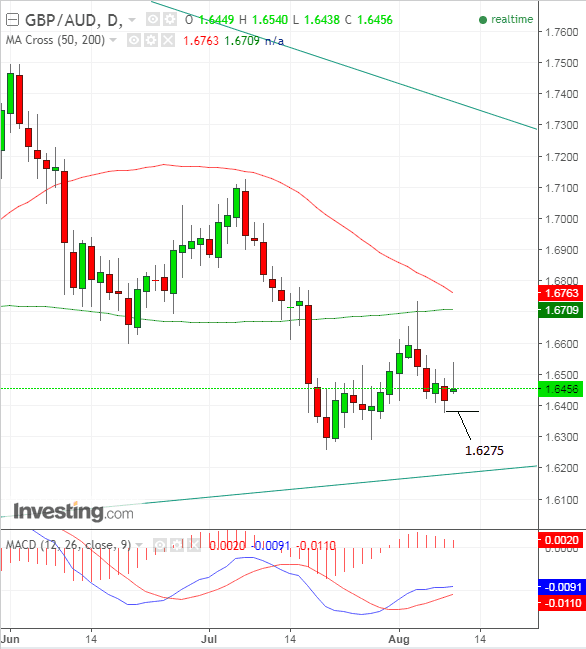Australian Dollar a Loser as Geopolitical Concerns Rise but Pound Still Remains Vulnerable to Losses v the Aussie

The Australian Dollar was one of the losers on Wednesday amidst sabre-rattling between North Korea and the US stoked fears of a war breaking out.
Rising tensions between the US and North Korea sparked an exodus from risk-orientated high-yielding assets into low-yielding safer assets.
Commodity currencies, including the Aussie, lost out as did riskier emerging market currencies, whilst safe-havens such as the Swiss Franc and Gold rose.
"Risk-aversion has quickly become the primary motivator for market positioning following President Trump turning up the rhetorical heat on North Korea late yesterday; the trickle lower in US stocks in our afternoon session has turned into a flood of losses for Asian and European stock markets while developed market bonds are bid. The G10 FX market has reacted predictably by bidding up the JPY and, especially, the CHF whilst pressuring the AUD," says Scotiabank's chief FX strategist Shaun Osborne.
The Pound initially capitalised on the Aussie's weakness, rising over a 100 bps to 1.6540, however, it had given back most of the gains at the time of writing and is currently trading at 1.6485 only about 45 bps above the open price of 1.6440.
Overall the GBP/AUD pair still looks bearish so any upside is likely to be short-lived, especially now it has resumed its longer-term downtrend, after temporarily recovering to the 1.6700 during a corrective phase.

Given the overall trend is down with little likelihood of a let-up on the cards we see all bar a market shock as pushing the pair even lower eventually and stick by our week ahead forecasts published on Sunday, which indicate a move below 1.6420 leading to a target at 1.6275 and the level of a long-term trendline.
The break below 1.6420 has already occured reinforcing our bearish view of the currency, but for reconfirmation we would wish to see a move under the 1.6378 lows.
On the data front, the releases for the Aussie Dollar so far this week include the NAB Business Confidence Survey in July, which rose to 12 from 8 and showed the best business confidence in a decade.
The survey showed the most confident sector was 'professional services', however, with Retail and other more consumer-orientated sectors disproportionatly hit by the lack of traction in wage growth.
The widening gulf between Consumer and Corporate confidnece was reinforced by the dissapointing result of the Westpac Consumer Confidence suvey which showed a -1.2% decline in August on Wednesday, it ninth consecutive month of negative gains.
Is the fall in value of Sterling impacting your international payments? Get up to 5% more foreign exchange by using a specialist provider by getting closer to the real market rate and avoid the gaping spreads charged by your bank for international payments. Learn more here.




